South Korea to invest $13.6 billion to bolster defenses capabilities in outer space
Thursday, 19 August 2021 11:00
South Korea will invest 16 trillion won ($13.6 billion) over the next 10 years in bolstering its defense capabilities in outer space. This includes 1.6 trillion won to be used to develop “core technologies” for military satellites.
Redwire opens digital engineering facility aimed at national security space agencies
Thursday, 19 August 2021 11:00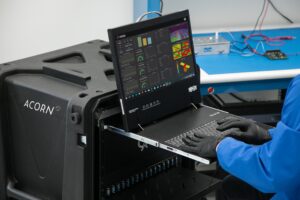
Redwire is opening a digital engineering facility where government agencies and aerospace companies can prototype hardware, design space architectures and concepts of operations.
Blue Origin to perform first New Shepard launch under updated license
Thursday, 19 August 2021 10:31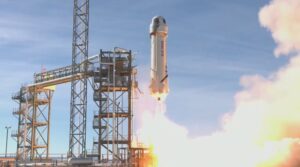
Blue Origin will conduct its next New Shepard suborbital mission Aug. 25 with a set of research payloads, but not people, on board on the vehicle’s first flight under a revised launch license.
BRICS to set up remote-sensing satellite network
Thursday, 19 August 2021 06:57 China will work with Russia, India, Brazil and South Africa to establish a network of remote-sensing satellites to help to deal with global challenges such as climate change, major disasters and environmental deterioration.
The heads of national space agencies in BRICS countries met on Wednesday via video link and signed the Agreement on the Cooperation on BRICS Remote Sensing Satellite Co
China will work with Russia, India, Brazil and South Africa to establish a network of remote-sensing satellites to help to deal with global challenges such as climate change, major disasters and environmental deterioration.
The heads of national space agencies in BRICS countries met on Wednesday via video link and signed the Agreement on the Cooperation on BRICS Remote Sensing Satellite Co Cloud data bursts from space move astronauts closer to Mars
Thursday, 19 August 2021 06:57 When Michael Collins peeked out a portal on the Apollo 11's command module, orbiting the moon alone while Neil Armstrong and Buzz Aldrin made their historic lunar walk below, he saw a blue and white planet with no borders. It struck him that humans would have a better future if political leaders also could see the world that way - as a whole globe - and learn to collaborate.
But he wouldn'
When Michael Collins peeked out a portal on the Apollo 11's command module, orbiting the moon alone while Neil Armstrong and Buzz Aldrin made their historic lunar walk below, he saw a blue and white planet with no borders. It struck him that humans would have a better future if political leaders also could see the world that way - as a whole globe - and learn to collaborate.
But he wouldn' Mapping the Universe's Earliest Structures with COSMOS-Webb
Thursday, 19 August 2021 06:57 When NASA's James Webb Space Telescope begins science operations in 2022, one of its first tasks will be an ambitious program to map the earliest structures in the universe. Called COSMOS-Webb, this wide and deep survey of half-a-million galaxies is the largest project Webb will undertake during its first year.
With more than 200 hours of observing time, COSMOS-Webb will survey a large pat
When NASA's James Webb Space Telescope begins science operations in 2022, one of its first tasks will be an ambitious program to map the earliest structures in the universe. Called COSMOS-Webb, this wide and deep survey of half-a-million galaxies is the largest project Webb will undertake during its first year.
With more than 200 hours of observing time, COSMOS-Webb will survey a large pat Firefly Aerospace selects Redwire as key mission partner in 2023 Lunar lander mission
Thursday, 19 August 2021 06:57 Redwire, a leader in mission critical space solutions and high reliability components for the next generation space economy, has been awarded a subcontract from Firefly Aerospace to provide avionics and critical navigation systems for their Blue Ghost lunar lander.
Firefly Aerospace was awarded a contract to deliver a suite of 10 science investigations and technology demonstrations to the
Redwire, a leader in mission critical space solutions and high reliability components for the next generation space economy, has been awarded a subcontract from Firefly Aerospace to provide avionics and critical navigation systems for their Blue Ghost lunar lander.
Firefly Aerospace was awarded a contract to deliver a suite of 10 science investigations and technology demonstrations to the NASA awards grants in Break the Ice Lunar Challenge
Thursday, 19 August 2021 06:57 As NASA prepares to go to the Moon with the Artemis program, in-situ resource utilization is paramount, and there is no hotter commodity than water. To that effect, 13 teams from across the United States have won a share of a $500,000 prize in a competition that asked for ideas for digging and hauling icy Moon "dirt" - or regolith.
NASA's Break the Ice Lunar Challenge opened in November 20
As NASA prepares to go to the Moon with the Artemis program, in-situ resource utilization is paramount, and there is no hotter commodity than water. To that effect, 13 teams from across the United States have won a share of a $500,000 prize in a competition that asked for ideas for digging and hauling icy Moon "dirt" - or regolith.
NASA's Break the Ice Lunar Challenge opened in November 20 ISRO soon to carry out static test of solid fuel engine for small rocket
Thursday, 19 August 2021 06:57 The Indian space agency is gearing up to test the solid fuel motor of its small rocket under development, said a senior official.
The official also said the space agency is planning to fly the small rocket - Small Satellite Launch Vehicle (SSLV) - before the end of this year itself with an Indian earth observation satellite.
The SSLV is being designed to have a carrying capacity of a
The Indian space agency is gearing up to test the solid fuel motor of its small rocket under development, said a senior official.
The official also said the space agency is planning to fly the small rocket - Small Satellite Launch Vehicle (SSLV) - before the end of this year itself with an Indian earth observation satellite.
The SSLV is being designed to have a carrying capacity of a NASA seeks student tech ideas for suborbital launch
Thursday, 19 August 2021 06:57 NASA is calling on all sixth through 12th-grade educators and students to submit experiments for possible suborbital flights as a way of gaining firsthand experience with the design and testing process used by NASA researchers.
The NASA TechRise Student Challenge invites students to design, build, and launch experiments on suborbital rockets and high-altitude balloons. The challenge aims t
NASA is calling on all sixth through 12th-grade educators and students to submit experiments for possible suborbital flights as a way of gaining firsthand experience with the design and testing process used by NASA researchers.
The NASA TechRise Student Challenge invites students to design, build, and launch experiments on suborbital rockets and high-altitude balloons. The challenge aims t Northrop Grumman Opens Missile Defense Futures Lab in Huntsville
Thursday, 19 August 2021 06:57 Northrop Grumman recently opened its new Missile Defense Futures Lab (MDFL) in Huntsville. The company's MDFL is pioneering change with speed and precision to develop, test and field an integrated missile defense system.
"Partnering with our customers, Northrop Grumman is leading the way as the defense industry undergoes digital transformation," said Lisa Brown, vice president, missile def
Northrop Grumman recently opened its new Missile Defense Futures Lab (MDFL) in Huntsville. The company's MDFL is pioneering change with speed and precision to develop, test and field an integrated missile defense system.
"Partnering with our customers, Northrop Grumman is leading the way as the defense industry undergoes digital transformation," said Lisa Brown, vice president, missile def 23rd SpaceX commercial resupply mission launches bone, plant, and materials studies to ISS
Thursday, 19 August 2021 06:43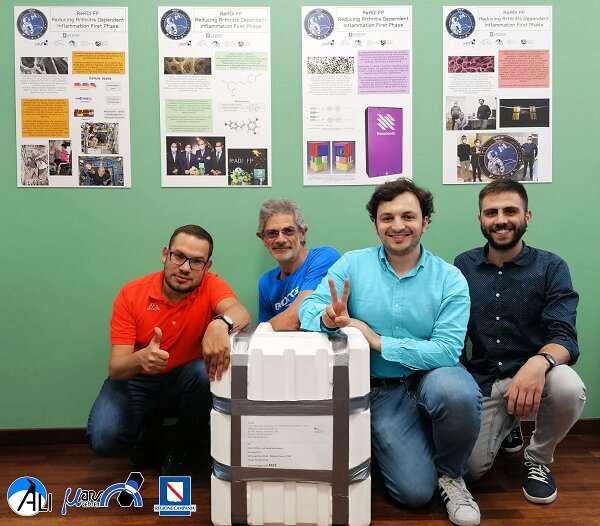
The 23rd SpaceX cargo resupply services mission carrying scientific research and technology demonstrations to the International Space Station is targeted to launch in late August from NASA's Kennedy Space Center in Florida.
South Korea touts Artemis Accords as a way to settle international space issues
Thursday, 19 August 2021 06:03
South Korea’s vice foreign minister said last week that the most effective way to settle space disputes is through an international diplomatic framework like the Artemis Accords.
South Korea’s Satrec Initiative to build constellation of high-resolution Earth observation satellites
Wednesday, 18 August 2021 13:43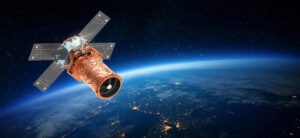
In the first step toward building its own constellation of Earth observation satellite, Satrec Initiative will send the high-resolution SpaceEye-T imaging satellite into low Earth orbit by the first quarter of 2024.
International Space Station experiment expands DNA research toolkit using CRISPR
Wednesday, 18 August 2021 13:21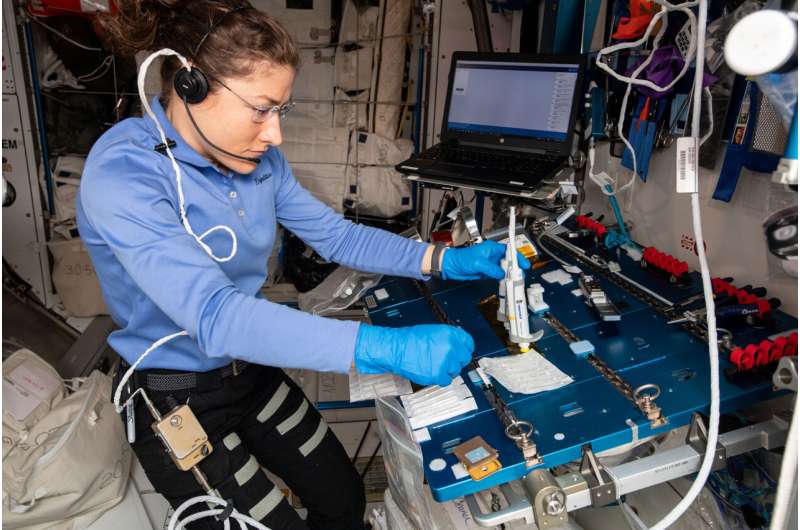
Studying DNA repair is key to future space exploration, which could expose humans to risk of DNA damage caused by radiation. Conditions in space also could affect the way the body repairs such damage, potentially compounding that risk.
Thanks to the work of four students, a team of researchers, and the first use in space of the CRISPR genome editing technique, a recent investigation aboard the International Space Station successfully generated breaks in the DNA of a common yeast, directed the method of repair, and sequenced the patched-up DNA to determine whether its original order was restored.
